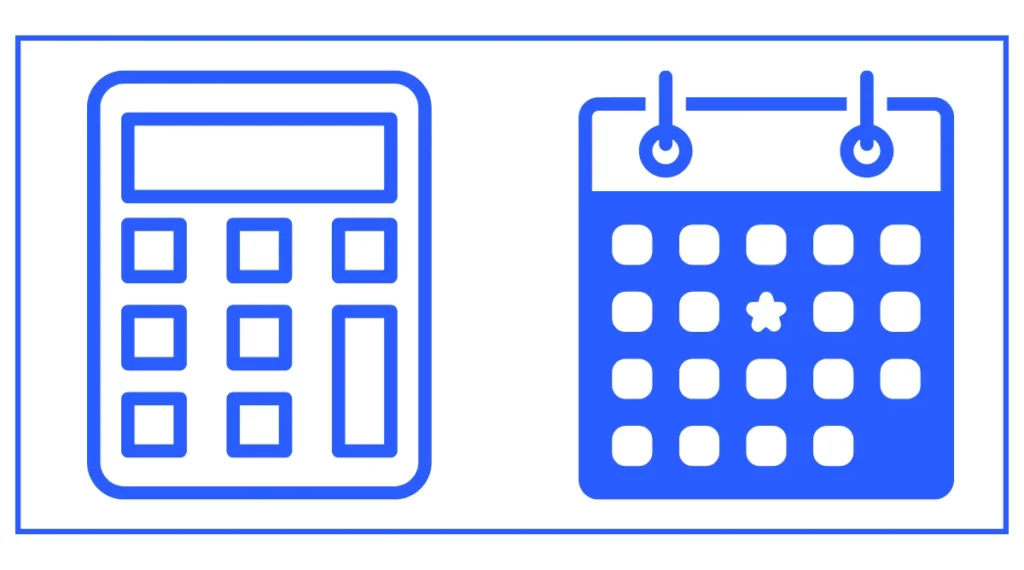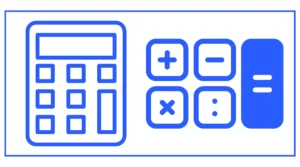Days To Weeks Calculator
This is an easy conversion tool that helps you convert days into weeks.
Simply enter the number of days, this days to week calculator will count the weeks for you.

Whether you want to calculate your half birthday or tree age, this can be a helpful tool.
What is a Days to Weeks Calculator?
A days to weeks calculator is a specialized tool designed to convert a given number of days into its equivalent in weeks. This conversion is based on the standard definition of a week, which consists of 7 days. The calculator takes the input of days and divides it by 7 to provide the result in weeks.
How Does the Calculator Work?
The days to weeks calculator uses a simple formula to perform the conversion:
Weeks = Days ÷ 7For example, if you enter 28 days, the calculator will divide this by 7, resulting in 4 weeks. The calculator can handle any number of days, including fractional days, and will provide results with decimal precision when necessary.
Why Use a Days to Weeks Calculator?
Converting days to weeks manually can be time-consuming and prone to errors, especially when dealing with large numbers or when precision is crucial. Here are some reasons why using a days to weeks calculator is beneficial:
- Accuracy: The calculator eliminates human error in calculations.
- Speed: It provides instant results, saving you valuable time.
- Convenience: You can perform conversions anytime, anywhere, without the need for mental math or paper calculations.
- Versatility: The calculator can handle a wide range of values, from a single day to thousands of days.
How to Use the Days to Weeks Calculator
Using our days to weeks calculator is straightforward and user-friendly. Follow these simple steps:
- Locate the input field labeled “Days” on the calculator.
- Enter the number of days you want to convert.
- The calculator will automatically process your input and display the result in the “Weeks” field.
For example, if you enter 30 days, the calculator will show 4.29 weeks (rounded to two decimal places).
Understanding the Results
The calculator provides results in decimal form, allowing for precise measurements. Here’s how to interpret the results:
- The whole number before the decimal point represents complete weeks.
- The decimal portion represents partial weeks.
For instance, if the result is 3.57 weeks:
- 3 represents three full weeks
- 0.57 represents a partial week (approximately 4 days)
Common Applications of the Days to Weeks Calculator
The days to weeks calculator has numerous practical applications in various fields and everyday situations:
Project Management
Project managers often need to convert days to weeks when planning timelines and allocating resources. For example, if a project is estimated to take 45 days, using the calculator quickly shows that it will span 6.43 weeks, helping managers make informed decisions about scheduling and resource allocation.
Event Planning
Event planners frequently work with timeframes in both days and weeks. The calculator can help determine how many weeks in advance to start preparations for an event. If an event is 100 days away, the calculator shows it’s approximately 14.29 weeks, allowing planners to create more effective timelines.
Academic Planning
Students and educators can use the calculator to plan study schedules or determine the duration of academic terms. For instance, a summer course lasting 35 days equates to 5 weeks, which can help in organizing study materials and setting learning goals.
Fitness and Health
In fitness and health contexts, many programs and challenges are structured in terms of weeks. If someone wants to start a 90-day fitness challenge, they can use the calculator to find out it’s a 12.86-week program, making it easier to break down into weekly goals.
Pregnancy and Child Development
Expectant parents and healthcare providers often track pregnancy progress in both days and weeks. The calculator can help convert important milestones. For example, 280 days (a typical full-term pregnancy) equates to 40 weeks, a commonly used measurement in obstetrics.
Advanced Features of the Days to Weeks Calculator
While the basic function of converting days to weeks is incredibly useful, our calculator offers additional features to enhance its utility:
Reverse Calculation: Weeks to Days
In addition to converting days to weeks, the calculator can also perform the reverse operation. This feature allows users to input a number of weeks and obtain the equivalent in days. For example, entering 6 weeks would yield a result of 42 days.
Date Calculator Function
Our tool also incorporates a date calculator feature, which allows users to:
- Calculate the number of days between two dates
- Add or subtract days from a given date
- Determine future or past dates based on a specified number of days
This functionality is particularly useful for project planning, event scheduling, and deadline management.
Conversion Table
To provide additional context and aid in understanding, the calculator includes a conversion table. This table shows common day-to-week conversions, such as:
- 7 days = 1 week
- 14 days = 2 weeks
- 21 days = 3 weeks
- 28 days = 4 weeks
- 30 days ≈ 4.29 weeks
- 60 days ≈ 8.57 weeks
- 90 days ≈ 12.86 weeks
This table serves as a quick reference and helps users develop an intuitive sense of day-to-week relationships.
The Importance of Time Units in Various Fields
Understanding and converting between different time units, such as days and weeks, is crucial in many professional and personal contexts:
Business and Finance
In the business world, time is often equated with money. Financial quarters, billing cycles, and payment terms are frequently expressed in weeks. The ability to quickly convert between days and weeks can be invaluable for financial planning and reporting.
Science and Research
Scientific studies and experiments often run for specific periods, which may be expressed in days or weeks. Researchers need to convert between these units for accurate data collection and analysis. For instance, a study lasting 56 days can be more concisely described as an 8-week study.
Healthcare
In healthcare, treatment durations and follow-up periods are often specified in days or weeks. The calculator can help healthcare providers and patients better understand and communicate about treatment timelines.
Travel and Hospitality
Travel planners and hospitality professionals frequently deal with bookings and itineraries that span multiple days or weeks. The calculator can assist in quickly determining the duration of trips or stays in weekly terms.
Tips for Effective Time Management Using Days and Weeks
While the days to weeks calculator is a powerful tool, combining its use with effective time management strategies can significantly enhance your productivity and planning skills:
- Break down long-term goals into weekly objectives: If you have a 90-day goal, use the calculator to determine it’s a 12.86-week period, then set specific weekly targets.
- Use weekly planning for better work-life balance: Instead of getting overwhelmed by daily to-do lists, try planning your work and personal activities on a weekly basis.
- Understand project durations better: When faced with a 45-day project, knowing it’s 6.43 weeks can help you allocate resources and set milestones more effectively.
- Improve estimation skills: Regularly using the calculator can help you develop a better intuitive sense of the relationship between days and weeks, improving your ability to estimate time frames without always needing the tool.
- Combine with other time management tools: Use the days to weeks calculator in conjunction with calendars, project management software, or time-tracking apps for comprehensive time management.
Limitations and Considerations
While the days to weeks calculator is a valuable tool, it’s important to be aware of its limitations and consider certain factors:
- Precision vs. Practicality: The calculator provides results to two decimal places, which is useful for precise calculations. However, in practical applications, you may need to round the results to the nearest whole week.
- Workweeks vs. Calendar Weeks: The calculator assumes a standard 7-day week. In some business contexts, a workweek might be considered 5 days. Adjust your interpretations accordingly.
- Variations in Month Lengths: When using the date calculator function, be aware that months have varying lengths (28 to 31 days), which can affect calculations spanning multiple months.
- Leap Years: For long-term calculations or those involving February in leap years, remember that leap years have an extra day, which can slightly impact results.
- Time Zones and International Date Line: The calculator doesn’t account for time zone differences or the International Date Line, which may be relevant for global projects or travel planning.





